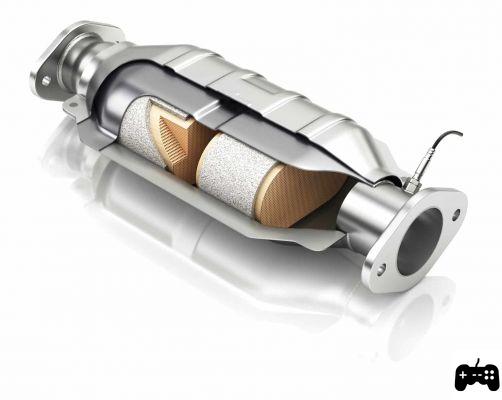 The useful life and maintenance of a catalytic converter - Pistonudos
The useful life and maintenance of a catalytic converter - Pistonudos
Welcome to Pistonudos, where we take care of providing you with detailed information on everything related to the automotive world. On this occasion, we will talk about the useful life, duration and maintenance of a catalytic converter, as well as the symptoms of frequent failures and how to repair it. If you are a vehicle owner, it is important that you know these aspects to keep your car in optimal condition and ensure its proper operation.
What is a catalyst and what is it for?
Let's start by understanding what a catalytic converter is and what its role is in a vehicle's exhaust system. A catalyst is an essential component in the exhaust system that is responsible for reducing polluting emissions generated by the engine. Its main function is to convert toxic gases, such as carbon monoxide, nitrogen oxides and unburned hydrocarbons, into gases that are less harmful to the environment, such as carbon dioxide, nitrogen and water.
What is the useful life of a catalyst?
The useful life of a catalytic converter can vary depending on several factors, such as the type of vehicle, driving style, quality of fuel used and maintenance conditions. In general, it is estimated that a catalytic converter has an average duration of between 80,000 and 100,000 kilometers. However, it is important to note that this figure can vary and it is advisable to consult your vehicle manufacturer's manual for more precise information on the specific useful life of your catalytic converter.
When and why replace a catalytic converter?
The replacement of a catalytic converter is necessary when it has reached the end of its useful life or has suffered irreparable damage. Some of the symptoms that indicate the need to replace a catalytic converter include a decrease in engine performance, an increase in pollutant emissions, a decrease in fuel efficiency, and the presence of abnormal noise or vibration in the exhaust system.
It is important to replace a damaged or worn catalytic converter as soon as possible, as its malfunction can negatively affect engine performance and cause further damage to other exhaust system components.
Is it advisable to clean a catalyst?
Although some websites and products promote catalytic converter cleaning as a solution to restore function, it is important to note that this practice is not always effective and can further damage the catalytic converter. Catalysts are designed with specific materials and special coatings that cannot be restored by cleaning.
If you suspect that your catalytic converter is clogged or damaged, it is advisable to go to a specialized workshop to carry out an evaluation and determine if it is necessary to replace it.
Common catalytic converter failures and how to repair it
There are several frequent failures that can affect the operation of a catalytic converter. Some of these include clogging due to debris buildup, fuel or oil contamination, and impact or knock damage to the exhaust system.
If you experience any of the symptoms mentioned above, it is important to take your vehicle to a specialized workshop for a proper diagnosis. Depending on the severity of the fault, it may be necessary to replace the catalytic converter with a new one or carry out specific repairs to solve the problem.
Frequent questions
1. What is the approximate cost to replace a catalytic converter?
The cost to replace a catalytic converter can vary depending on the type of vehicle, make and model, as well as the region in which you are located. In general, the price of a new catalytic converter can range from 200 to 1000 euros, depending on these factors. Additionally, it is important to note that the cost of labor for installation must also be considered.
2. What happens if I don't replace a damaged catalytic converter?
If you don't replace a damaged catalytic converter, you are likely to experience decreased engine performance, increased pollutant emissions, and decreased fuel efficiency. Also, a damaged catalytic converter can negatively affect other exhaust system components and cause additional damage. Therefore, it is advisable to replace a damaged catalytic converter as soon as possible to avoid major problems.
Conclusion
In summary, the catalyst is an essential component in the exhaust system of a vehicle that is responsible for reducing polluting emissions. Its useful life can vary depending on various factors and it is important to replace it when it has reached the end of its useful life or has been damaged beyond repair. Cleaning a catalyst is not always recommended and it is better to go to a specialized workshop to evaluate its condition. If you are experiencing symptoms of catalytic converter failure, it is important to get a proper diagnosis and make any necessary repairs. Remember that keeping your catalytic converter in good condition is essential to guarantee the proper functioning of your vehicle and reduce the environmental impact.
We hope this article has been informative and has provided you with the information you were looking for on the life and maintenance of a catalytic converter. If you have any additional questions or want to share your experience, feel free to leave us a comment below. We will be happy to help you!
Until next time!


























